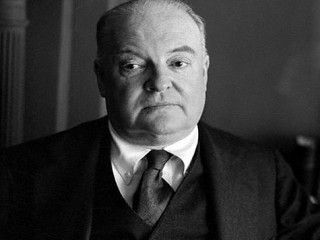
Edmund Wilson biography
Date of birth : 1895-05-08
Date of death : 1972-06-13
Birthplace : Red Bank, New Jersey, U.S.
Nationality : American
Category : Famous Figures
Last modified : 2011-02-28
Credited as : Literary and social critic, The Crack-up, The Scrolls from the Dead Sea
The American critic Edmund Wilson pursued an independent course that secured him respect and eminence.
Edmund Wilson was born in Red Bank, N.J., on May 8, 1895, the son of a railroad lawyer. He attended Princeton University (1912-1916), where he was editor of the Nassau Literary Magazine and a friend of writers John Peale Bishop and F. Scott Fitzgerald. With Bishop, he was later to publish a miscellany, The Undertaker's Garland (1922); after Fitzgerald's death, Wilson compiled in The Crack-up (1945) the tragic story of the disaster which overtook that novelist.
After taking a bachelor of arts degree, Wilson was briefly a reporter for the New York Sun. Drawn into World War I, he served in a French hospital and in United States intelligence. He then became managing editor of Vanity Fair. The first of his four marriages took place in 1923. He was, in turn, book review editor and associate editor of the New Republic (1926-1931); later he was a book reviewer for the New Yorker (1944-1948).
Despite his very great endowment as a critic, Wilson never settled comfortably into that role and tried his hand repeatedly at other things. Discordant Encounters (1926) is a volume of "dialogues and plays." Five Plays (1954) and other works are theatrical efforts. I Thought of Daisy (1929) and Memoirs of Hecate County (1946), the latter banned as pornographic, are fiction. Poets, Farewell! (1929) is a second volume of verse. It is hard to classify The American Jitters (1932), Europe without Baedeker (1947), The Scrolls from the Dead Sea (1955), and Apologies to the Iroquois (1959) as anything but journalism, albeit journalism of a high order. Marked by the influence of Karl Marx, whether it be criticism or journalism, Wilson's writing shows a strong social consciousness.
Wilson's reputation, however, rests solidly on his critical works: Axel's Castle (1931), The Triple Thinkers (1938), To the Finland Station (1940), The Wound and the Bow (1941), The Boys in the Back Room (1941), Classics and Commercials (1950), The Shores of Light (1952), and individual essays collected in miscellanies. The encompassing and organizing power of his mind, his ability to state with exceptional clarity, his range of learning, and his sensibility are brilliantly displayed in these volumes. He opened new perspectives on novelists Henry James, Rudyard Kipling, Edith Wharton, and Charles Dickens.
On June 13, 1972, Wilson died at his home in Talcottville, N.Y. The house was the setting of his last work: Upstate: Records and Recollections of Northern New York (1971).
















